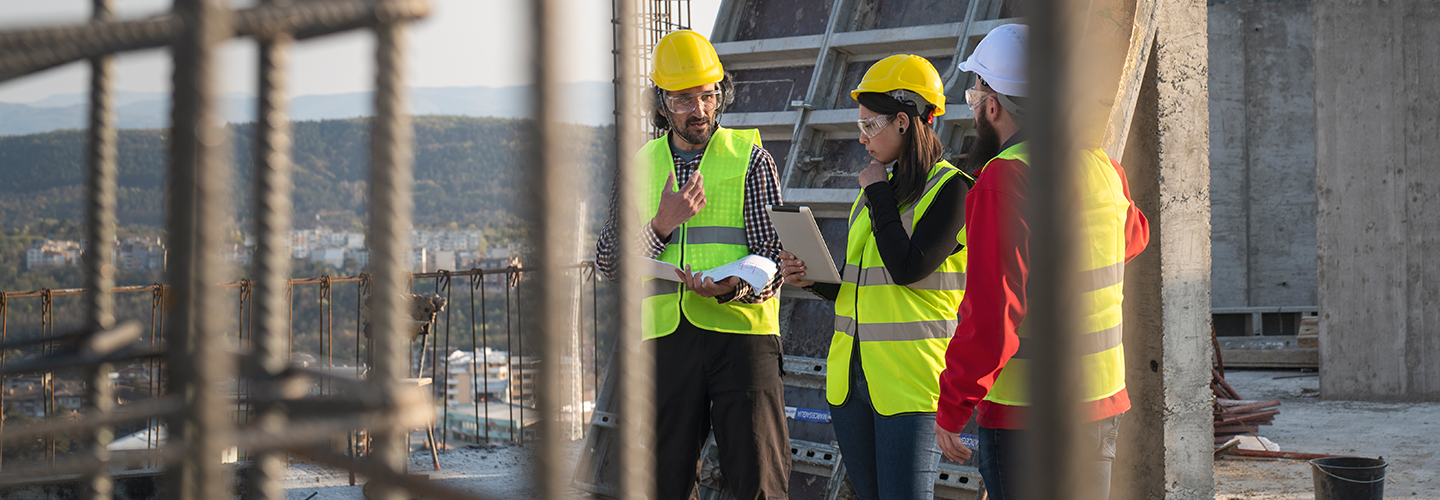Infrastructure projects are getting larger and more complex, requiring collaboration between multiple parties to become a reality.
As a result, projects need levels of sophistication not seen before. These projects are being built under innovative partnership models, require significant investments, and often face cost overruns at unprecedented levels.
The challenges of cost escalation and effectively managing them are often a topic of discussion at most boardroom tables and project sites among various stakeholders involved in the lifecycle of an infrastructure project.
Fortunately, there are solutions.

Reasons for cost escalation
For the past few years, project costs have been steadily increasing for labour, materials, and equipment for a whole host of reasons including, but not limited to, general inflation, shortage of labour and supply chain disruptions caused by the COVID-19 pandemic, the war in Ukraine, and attacks on commercial shipping vessels in the Red Sea.
The industrial product price index (IPPI)—which measures price changes for major commodities sold by manufacturers operating in Canada—rose to 123.4 in January 2024 from 100 in January 2020 but was as high as 132.7 in May 2022. The prices of key construction materials like steel, concrete, and lumber have fluctuated due to supply chain disruptions, demand changes, and international trade policies.
Another issue is the shortage of skilled labour. Increased demand for workers, rising wages, and changes in labour regulations have resulted in higher labour and overall construction costs. Statistics Canada’s most recent Canadian Survey on Business Conditions found that 31.4% of construction firms expected to experience labour shortages in the first quarter of 2024 compared to 22.7% of all businesses.
Project delays are another reason for rising costs. They can be caused by delays in obtaining permits and regulatory approvals, design changes, standing charges for equipment, waiting for materials due to supply chain problems, unforeseen soil conditions (such as unidentified pipelines or cables in the ground). This results in prolonged construction timelines, which have significant costs attached to them.
Expected labour shortages in the first quarter of 2024
(according to Statistics Canada’s most recent Canadian Survey on Business Conditions)
Tools and methods for managing costs
To keep costs under control, there are various ways to manage costs at the operational level.
Collaboration between owners and project teams is now essential to ensure the successful completion of infrastructure projects. The days of limited communication due to segregation of responsibilities between project funding/ownership versus delivery are long gone. Today, all stakeholders must communicate effectively and collaborate frequently.
Those contracts will often include an agreement on risk-sharing provisions, inflation-adjustment mechanisms instead of relying on a fixed-price approach, and price fluctuation and product substitution clauses. Progress is being made on the topic of collaboration and risk sharing in the form of evolving contract models in the recent years, such as the progressive design build.
Focusing on resiliency and having a supply chain strategy can also keep costs under control. This may involve stockpiling or pre-purchasing high-demand materials to protect against rising prices, localizing the supply chain, and proactively identifying risks and implementing a mitigation plan to cope with scheduling issues.
In addition, having a strong project management system in place is crucial for effective planning, monitoring, and control of the project throughout its lifecycle. This system helps to identify, mitigate, or manage risks related to time and cost, ensuring the project's success. The good project management systems are also beginning to use the power of artificial intelligence (AI) to enhance chances of delivering projects on time and within budget.
Ultimately, cost escalation is a multifaceted issue, and it must be handled using multifaceted solutions.
Future changes and final thoughts
Labour shortages in the construction industry are an ongoing problem. Statistics Canada noted that there were 137,890 job vacancies in trades, transport and equipment operators, and related occupations in the fourth quarter of 2023 (the latest numbers available).
Ongoing education across the country about the industry to attract young talent needs to start early.
For example, Ontario is allowing grade 11 students to enter full-time skilled trades apprenticeships while still earning a high school diploma. Further, Alberta announced last year that it would provide $10.7 million to Women Building Futures, a non-profit organization that helps women build a career in the skilled trades.
Contract models are important. We note that the alliance model for public-private partnerships (P3s) is here to stay. This collaborative approach involves the owner and private sector participants sharing the risks and responsibilities related to the project’s execution. There is an emphasis on cooperation, and the overall goal of the alliance model is to achieve common success.
Technology can also play a part in improving efficiency. Integrating digital processes and technologies can help gather relevant data to make informed decisions. For example, predictive analytics allow construction firms to plan for future site requirements—whether it be a day, a week, or a month in advance.

AI is taking it one step further. AI can be used to create the majority of a project plan instead of creating a new one from scratch each and every time. Also, a purpose-built generative pre-trained transformer (a private GPT) may be used to review data from past projects to look for trends and schedule constraints, predict costs, and provide additional insights. AI’s use cases in infrastructure projects are increasing day by day, whether to help write RFPs, streamline project management, or assist in creation of delay models. It’s certainly an exciting time for the industry that has usually been slow to change.

How we can help
Our Infrastructure advisory practitioners guide clients along the entire project lifecycle, turning complex roadblocks into navigable bridges. Whether it’s proactively assisting with setting up appropriate project management systems, including implementation of AI, providing oversight on projects or handling cost and delay claims, our Infrastructure team is committed to offering strategic insights to enhance fiscal resilience and project controls to allow our clients to not only manage cost escalations effectively but to deliver successful projects.